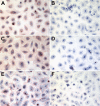DAS181 inhibits H5N1 influenza virus infection of human lung tissues
- PMID: 19596886
- PMCID: PMC2737896
- DOI: 10.1128/AAC.00389-09
DAS181 inhibits H5N1 influenza virus infection of human lung tissues
Abstract
DAS181 is a novel candidate therapeutic agent against influenza virus which functions via the mechanism of removing the virus receptor, sialic acid (Sia), from the adjacent glycan structures. DAS181 and its analogues have previously been shown to be potently active against multiple strains of seasonal and avian influenza virus strains in several experimental models, including cell lines, mice, and ferrets. Here we demonstrate that DAS181 treatment leads to desialylation of both alpha2-6-linked and alpha2-3-linked Sia in ex vivo human lung tissue culture and primary pneumocytes. DAS181 treatment also effectively protects human lung tissue and pneumocytes against the highly pathogenic avian influenza virus H5N1 (A/Vietnam/3046/2004). Two doses of DAS181 treatment given 12 h apart were sufficient to block H5N1 infection in the ex vivo lung tissue culture. These findings support the potential value of DAS181 as a broad-spectrum therapeutic agent against influenza viruses, especially H5N1.
Figures






References
-
- Belser, J. A., X. Lu, K. J. Szretter, X. Jin, L. M. Aschenbrenner, A. Lee, S. Hawley, H. Kim do, M. P. Malakhov, M. Yu, F. Fang, and J. M. Katz. 2007. DAS181, a novel sialidase fusion protein, protects mice from lethal avian influenza H5N1 virus infection. J. Infect. Dis. 196:1493-1499. - PubMed
-
- Chandrasekaran, A., A. Srinivasan, R. Raman, K. Viswanathan, S. Raguram, T. M. Tumpey, V. Sasisekharan, and R. Sasisekharan. 2008. Glycan topology determines human adaptation of avian H5N1 virus hemagglutinin. Nat. Biotechnol. 26:107-113. - PubMed
-
- Cowling, B. J., R. O. Fung, C. K. Cheng, V. J. Fang, K. H. Chan, W. H. Seto, R. Yung, B. Chiu, P. Lee, T. M. Uyeki, P. M. Houck, J. S. Peiris, and G. M. Leung. 2008. Preliminary findings of a randomized trial of non-pharmaceutical interventions to prevent influenza transmission in households. PLoS ONE 3:e2101. - PMC - PubMed
-
- Malakhov, M. P., L. M. Aschenbrenner, D. F. Smee, M. K. Wandersee, R. W. Sidwell, L. V. Gubareva, V. P. Mishin, F. G. Hayden, D. H. Kim, A. Ing, E. R. Campbell, M. Yu, and F. Fang. 2006. Sialidase fusion protein as a novel broad-spectrum inhibitor of influenza virus infection. Antimicrob. Agents Chemother. 50:1470-1479. - PMC - PubMed
Publication types
MeSH terms
Substances
Grants and funding
LinkOut - more resources
Full Text Sources
Other Literature Sources
Medical

